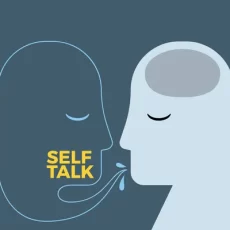Please read Part 1, first.
2. Sexually Transmitted Diseases/Infections
There is a documented case of a pregnant woman in Haiti who was screened for HIV; the screening is a part of a routine prenatal care. The test came out negative and a few weeks later, the mother gave birth to an HIV free baby who then died within a few days of being born due to congenital syphilis. This syphilis could have been detected by the very blood sample which was taken for HIV and the baby could have been saved.
HIV is the most talked about STI but it is not the only. There are over 27 knows STIs, some of which are chlamydia, gonorrhoea, syphilis and genital herpes. But who wants to talk about these when most of us are so confident about never getting infected by them.
During the last two mins of my presentation, half a million people across the globe were having sex. And now, as I speak, around 2000 of them have an STI.
In this modern age, we want to be safe all the time. Take the case of driving, for instance. Before we put the key in, we make sure we put the belt on; hell, now certain cars have reminders to make us do that! We follow the traffic rules and are penalised heavily if we don’t. Why can’t we acquire the same attitude towards sex, considering most young adults are sexually active during this period of their lives? If we want to be safe and enjoy a fulfilling sex life, we need to be responsible. This could mean –
- always wearing a latex condom during intercourse
- limiting the number of people you have sex with
- talking honestly with your partner about your sexual history
- getting yourself and your partner tested before having intercourse for the first time. Currently, Lal Path Labs offers an STD panel test; using a blood sample you are tested for 12 infections and the report is delivered the very next day.
3. Infertility
Women’s fertility begins to decline in the late twenties, with substantial decline in the thirties. This may happen because she is not producing enough ova or the fallopian tubes are blocked and thus, preventing the ova from reaching the uterus, the mucus in the cervix may be preventing the sperm from entering or a disease of the uterine lining may be preventing a fertilized ovum from attaching itself.
Male fertility is less affected by age but declines significantly by late thirties. Some of the most common causes of male infertility are low production of sperm, blockage in the ejaculatory duct or the inability of the sperm to swim well enough to reach the cervix.
Infertility burdens a marriage emotionally. Partners may become frustrated and angry with each other and could suffer from feelings of emptiness, despair and worthlessness. Such couples may benefit from counselling and support from other infertile couples.
One of such couples existed in my family. They could not conceive after a year of trying really hard. But eight months later, my female relative’s pregnancy test came out positive. Science says that couples having trouble conceiving after one year should not rush into fertility treatments immediately since the chances of success are higher after 18 months to two years.
3.1 Assisted Reproduction – Surrogacy
For couples who are unable to conceive the natural way, many methods of assisted reproduction exist today. The one which I’ll be covering today is that of surrogacy. In surrogate motherhood, a fertile woman is impregnated with the semen of the prospective father artificially. The woman carries the baby for 9 months and gives it to the father and his mate upon delivery.





